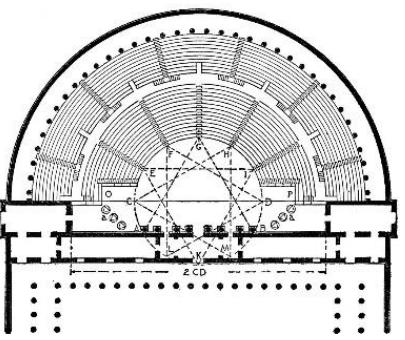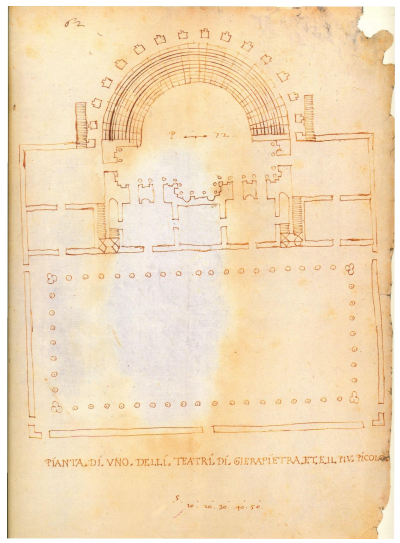CULTURAL HERITAGE
An interdisciplinary approach for the study and the valorization of the Roman theatres of Crete

An interdisciplinary approach for the study and the valorization of the Roman theatres of Crete
PhD: Cristina Manzetti
This project is the result of an interdisciplinary study that has involved disciplines as architecture, archaeology, acoustics and computer science. The main challenge have been to demonstrate how these disciplines can collaborate in order to achieve new information about ancient buildings that are now almost completely destroyed, and how they can improve the valorization of these monuments.
There are three research questions. The first one is: what do we know about the architecture of the Roman theatres of Crete? All the available documents (ancient plans, descriptions, archaeological reports, aerial pictures, geophysical anomalies) related to the twelve Roman theatres of Crete have been examined. It has been discovered that there are several lacunae about these monuments, above all due to their bad state of preservation, and that an overall study about the Roman theatres of Crete is missing. So, the second question has arisen: In which way we can obtain information about the architecture of monuments that are scarcely preserved? A new methodology has been developed consisting in the use of 3D models of the hypothetical reconstructions of the original aspect of the theatres, 3D visibility analysis and virtual acoustics analysis. It has been demonstrated as 3D models are useful to carry out analyses and then to obtain additional info, and that the 3D visibility analysis and the virtual acoustics analysis can produce interesting results useful to formulate or to verify hypothesis about the architecture of the theatres. The interpretation of the results obtained from the afore mentioned methodology, applied to seven of the Roman theatres of Crete (Aptera, Hersonissos, Gortyna acropolis, Gortyna Pythion, Gortyna Kazinedes, Koufonissi and Lissos), has brought to new conclusions: the Roman theatres of Crete seem to have preserved some characteristics belonging to the architecture of the Greek theatre. Then, a new question has been formulated: How to spread the information obtained through the accurate examination of the monuments and how to valorize the Roman theatres of Crete? Two different solutions has been thought, one dedicated in particular to the specialists and another one addressed to the general public. The first solution is a web database containing all the information about the Roman theatres of Crete, including the acoustics values of the parameters examined; it is possible to filter the results according to the name of the theatres, to the name of the scholars who documented it, and according to the architectural data. The second solution is a VR application for head-mounted display, where the user is virtually transported inside each theatre; he/she can choose a seat and listen to the auralised files as if he is attending an ancient performance, and he can interact with several icons in order to have information about the theatres. These two solutions intend to facilitate and improve the study of the Roman theatres, and to bring the general public closer to Cultural Heritage.
https://dias.library.tuc.gr/view/79671



